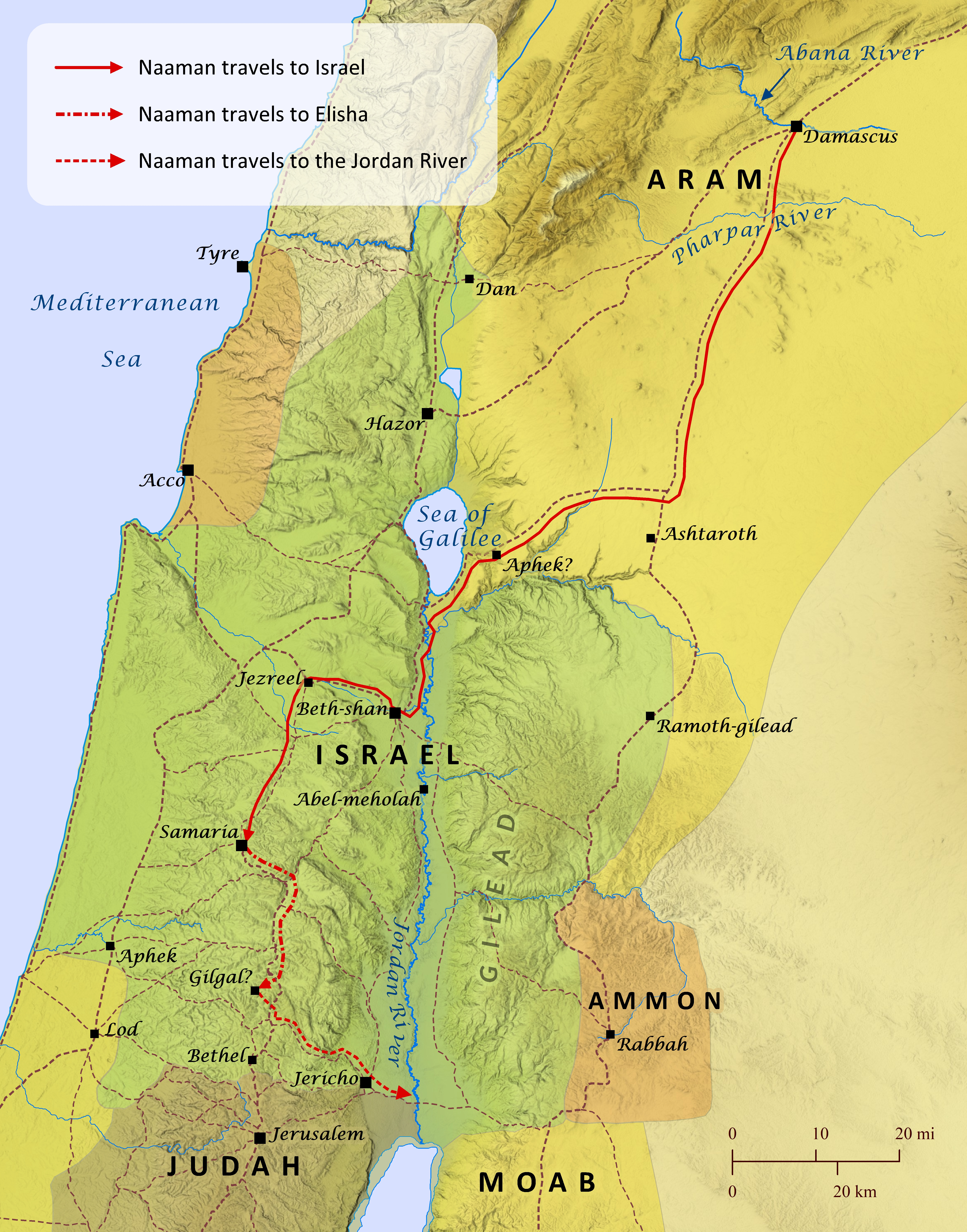Note: This view shows ‘verses’ which are not natural language units and hence sometimes only part of a sentence will be visible—click on any Bible version abbreviation down the left-hand side to see the verse in more of its context. Normally the OET discourages the reading of individual ‘verses’, but this view is only designed as a tool for doing comparisons of different translations—the older translations are further down the page (so you can read up from the bottom to trace the English translation history). The OET segments on this page are still very early looks into the unfinished texts of the Open English Translation of the Bible—please double-check these texts in advance before using in public.
OEB No OEB 2 KI book available
WEBBE So Gehazi followed after Naaman. When Naaman saw one running after him, he came down from the chariot to meet him, and said, “Is all well?”
WMBB (Same as above)
NET So Gehazi ran after Naaman. When Naaman saw someone running after him, he got down from his chariot to meet him and asked, “Is everything all right?”
LSV And Gehazi pursues after Naaman, and Naaman sees one running after him, and comes down off the chariot to meet him, and says, “Is there peace?”
FBV So Gehazi chased after Naaman. When Naaman saw him running after him, he jumped down from the chariot to meet him and asked, “Is everything all right?”
T4T So Gehazi hurried to catch up with Naaman. When Naaman saw Gehazi running toward him, he stopped the chariot in which he was riding, jumped out, and went to see what Gehazi wanted. He asked him, “Is everything all right?”
LEB So Gehazi pursued after Naaman. When Naaman saw someone running after him, he jumped off his chariot to meet him and asked him, “Is it peace?”
BBE So Gehazi went after Naaman. And when Naaman saw him running after him, he got down from his carriage and went back to him and said, Is all well?
Moff No Moff 2 KI book available
JPS So Gehazi followed after Naaman. And when Naaman saw one running after him, he alighted from the chariot to meet him, and said: 'Is all well?'
ASV So Gehazi followed after Naaman. And when Naaman saw one running after him, he alighted from the chariot to meet him, and said, Is all well?
DRA And Giezi followed after Naaman: and when he saw him running after him, he leapt down from his chariot to meet him, and said: Is all well?
YLT And Gehazi pursueth after Naaman, and Naaman seeth one running after him, and alighteth from off the chariot to meet him, and saith, 'Is there peace?'
Drby And Gehazi followed after Naaman. And when Naaman saw him running after him, he sprang down from the chariot to meet him, and said, Is all well?
RV So Gehazi followed after Naaman. And when Naaman saw one running after him, he lighted down from the chariot to meet him, and said, Is all well?
SLT And Gehazi will pursue after Naaman, and Naaman will see he ran after him, and will descend from his chariot to meet him, and he will say, Is it peace?
Wbstr So Gehazi followed after Naaman. And when Naaman saw him running after him, he lighted down from the chariot to meet him, and said, Is all well?
KJB-1769 So Gehazi followed after Naaman. And when Naaman saw him running after him, he lighted down from the chariot to meet him, and said, Is all well?[fn]
KJB-1611 So Gehazi followed after Naaman: and when Naaman saw him running after him, hee lighted downe from the charet to meet him, and said, [fn]Is all well?
(Modernised spelling is same as from KJB-1769 above, apart from capitalisation and punctuation and footnotes)
Bshps And so Gehezi folowed Naaman: And when Naaman saw him running after him, he light downe from the charet to meete him, and saide: Is all well?
(And so Gehezi followed Naaman: And when Naaman saw him running after him, he light down from the chariot to meet him, and said: Is all well?)
Gnva So Gehazi followed speedily after Naaman. And when Naaman sawe him running after him, he light downe from the charet to meete him, and said, Is all well?
(So Gehazi followed speedily after Naaman. And when Naaman saw him running after him, he light down from the chariot to meet him, and said, Is all well? )
Cvdl So Gehasi folowed Naaman. And wha Naaman sawe yt he ranne after him, he lighte downe from the charet to mete him, & sayde: Are all thinges well?
(So Gehasi followed Naaman. And what Naaman saw it he ran after him, he lighte down from the chariot to meet him, and said: Are all things well?)
Wycl And Giezi suede aftir the bak of Naaman; and whanne Naaman hadde seyn Giezi rennynge to hym, he skippide doun of the chare in to the metyng of Giezi; and seide, Whether alle thingis ben riytfuli?
(And Giezi followed after the back of Naaman; and when Naaman had seen Giezi running to him, he skipped down of the chare in to the meeting of Giezi; and said, Whether all things been rightfully?)
Luth Also jagte Gehasi dem Naeman nach. Und da Naeman sah, daß er ihm nachlief, stieg er vom Wagen ihm entgegen und sprach: Gehet es recht zu?
(So hunted Gehasi to_him Naeman after. And there Naeman saw, that he him nachlief, rose he from_the cart him in_contrast_to and spoke: Go it right to/for?)
ClVg Et secutus est Giezi post tergum Naaman: quem cum vidisset ille currentem ad se, desiliit de curru in occursum ejus, et ait: Rectene sunt omnia?
(And followed it_is Giezi after tergum Naaman: which when/with had_seen he/that_one currentem to himself, desiliit from/about curru in/into/on occursum his, and he_said: Rectene are everything? )
RP-GNT No RP-GNT 2 KI book available
